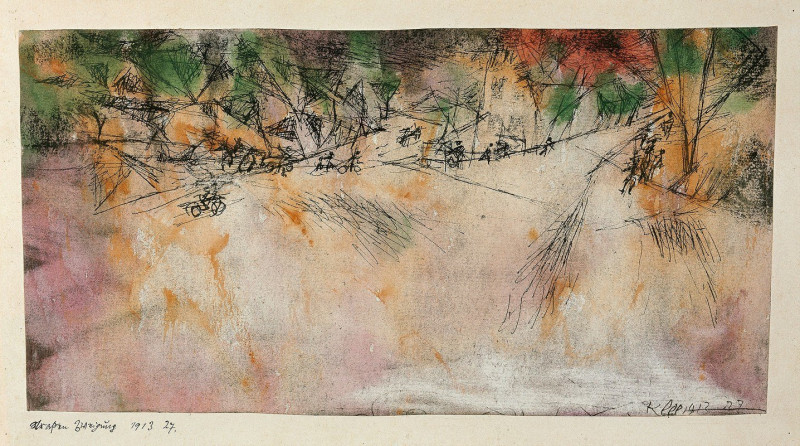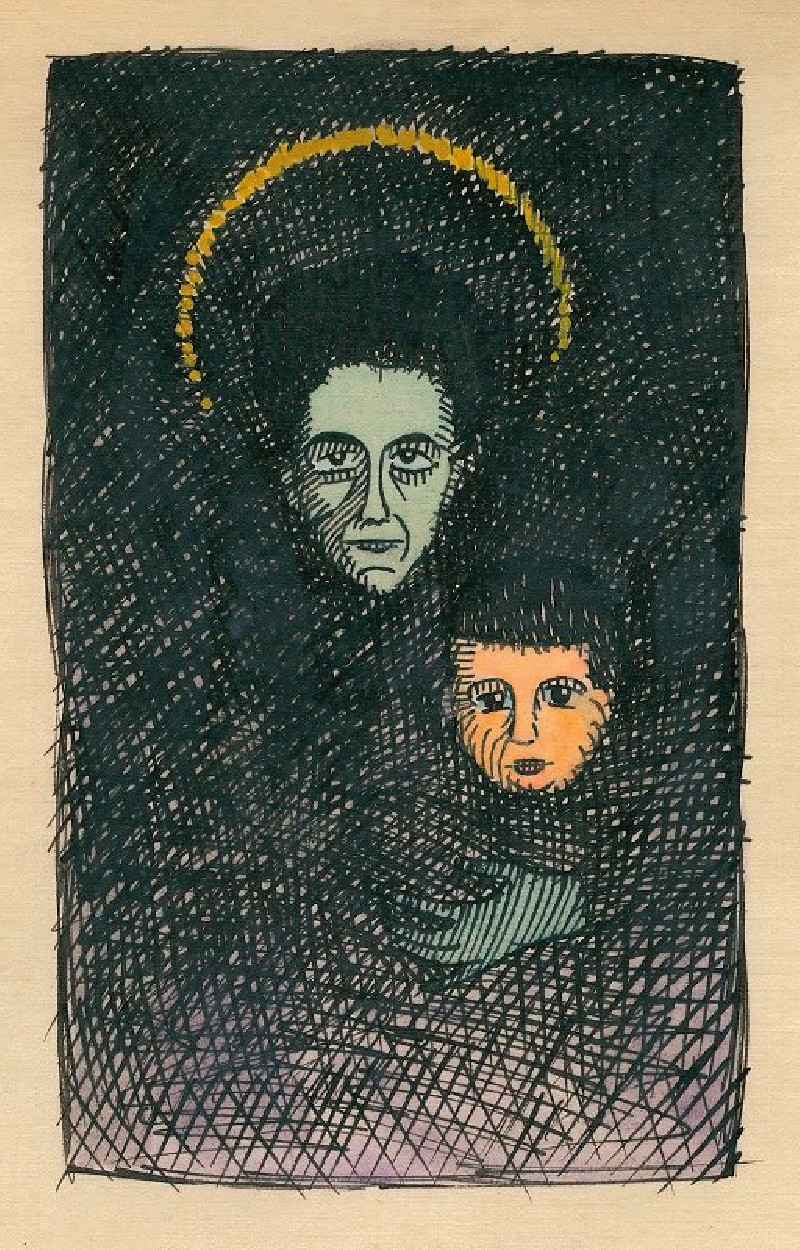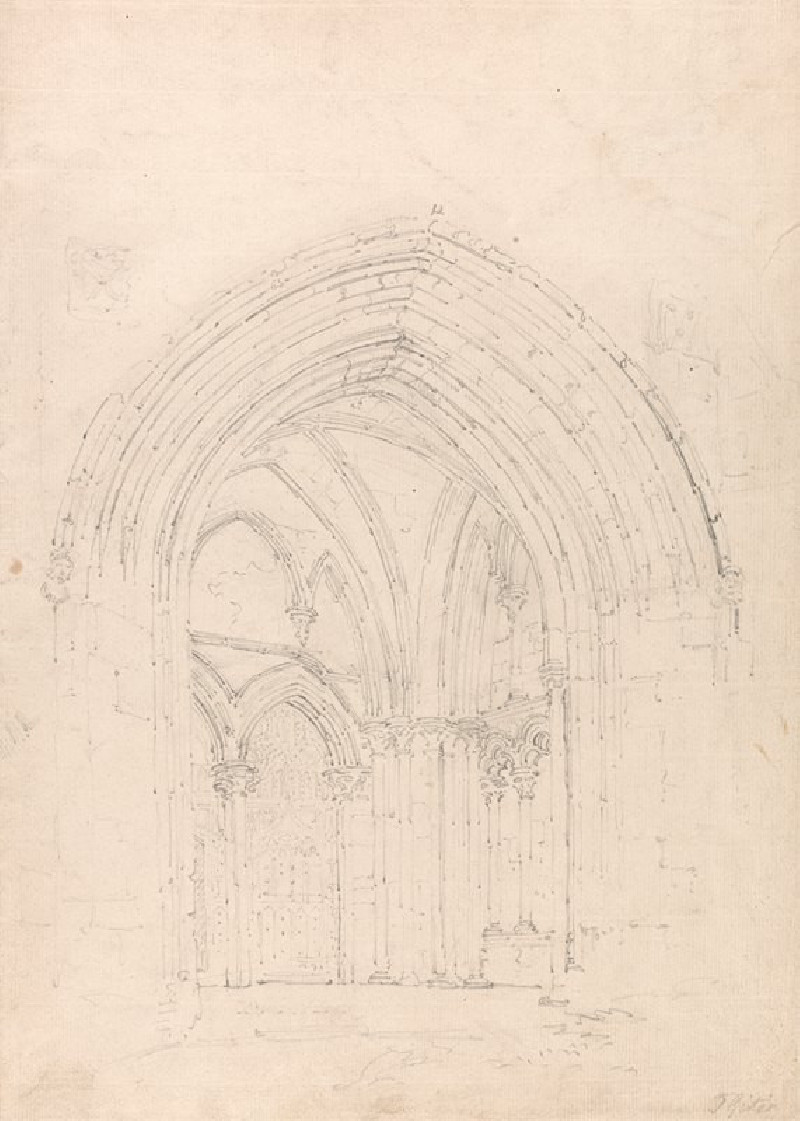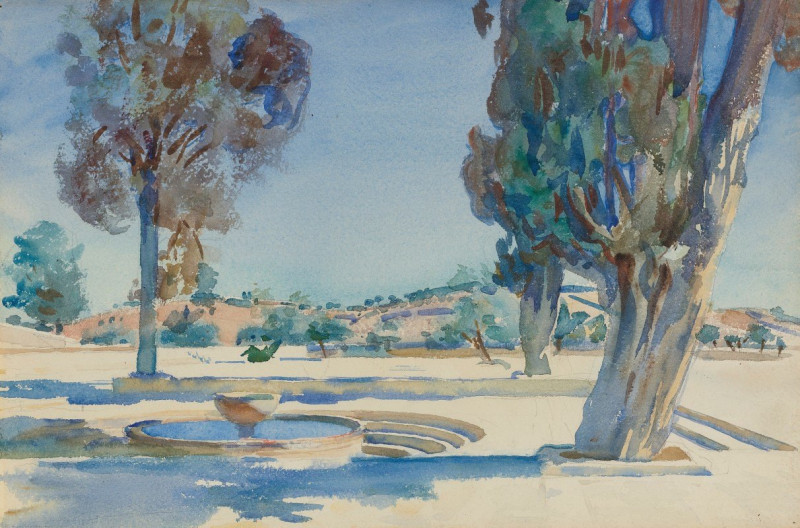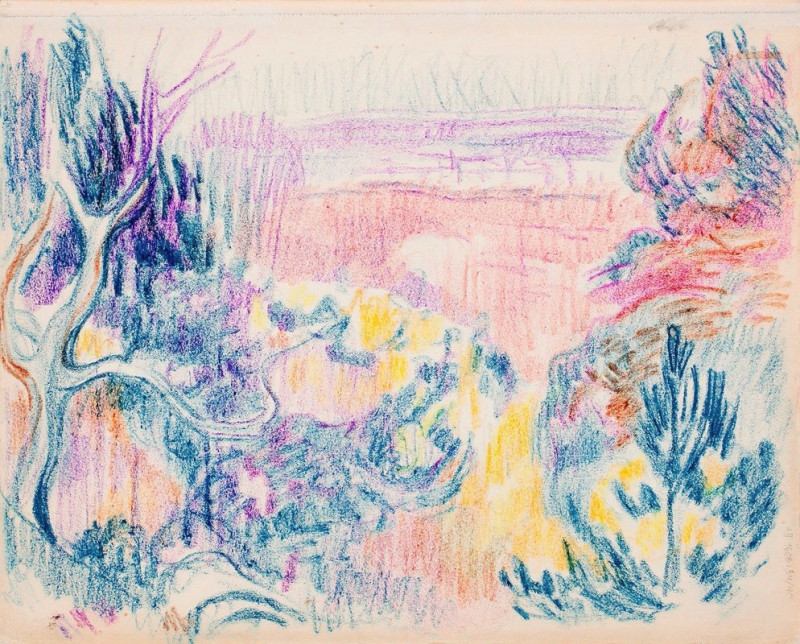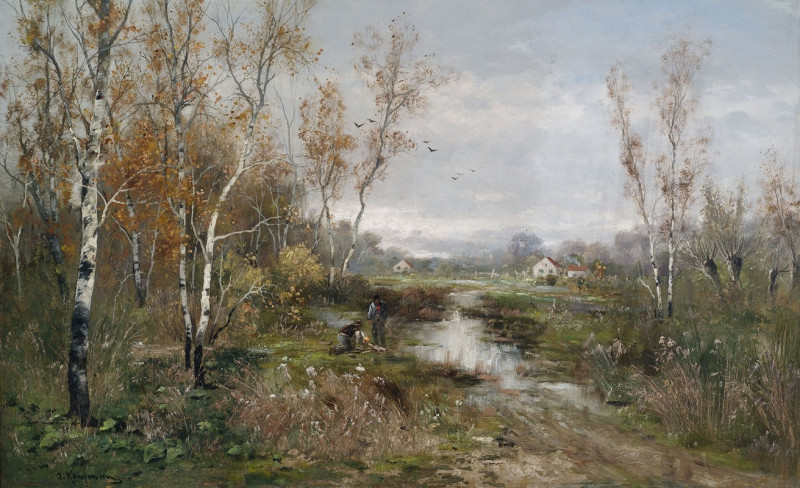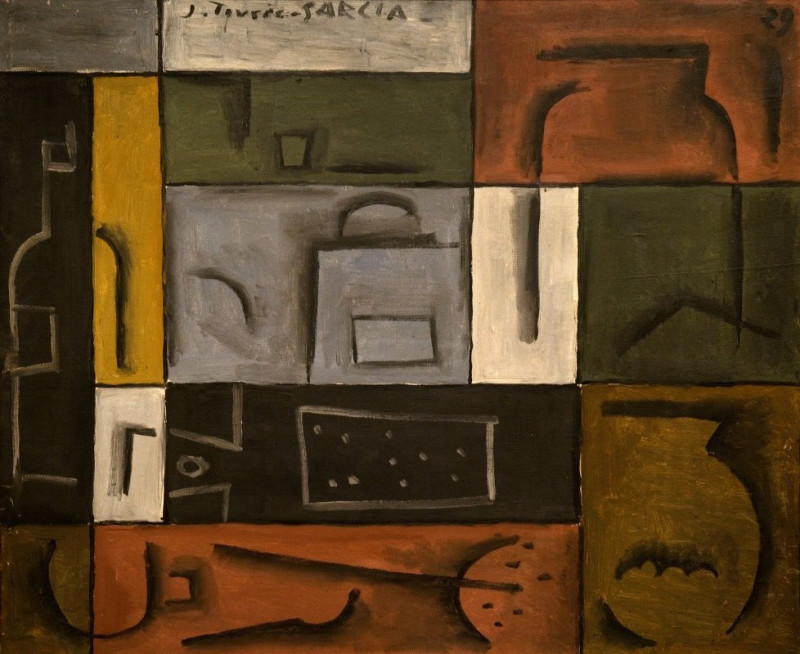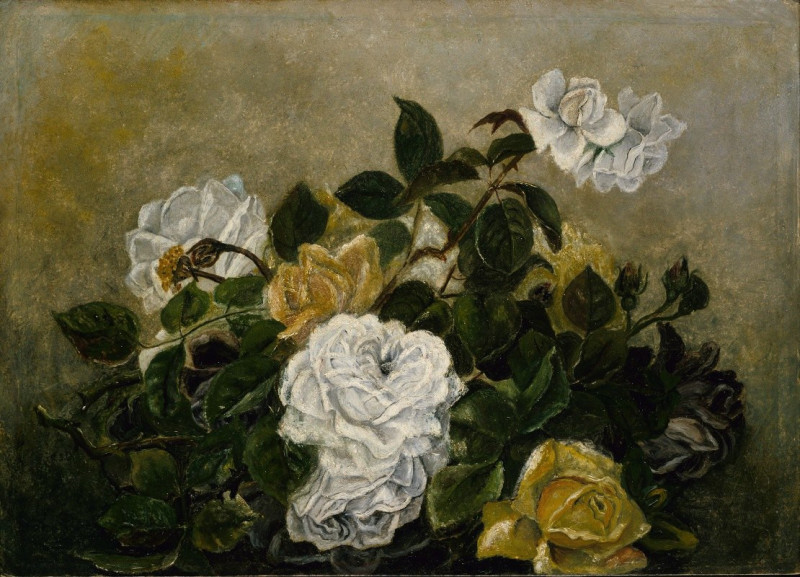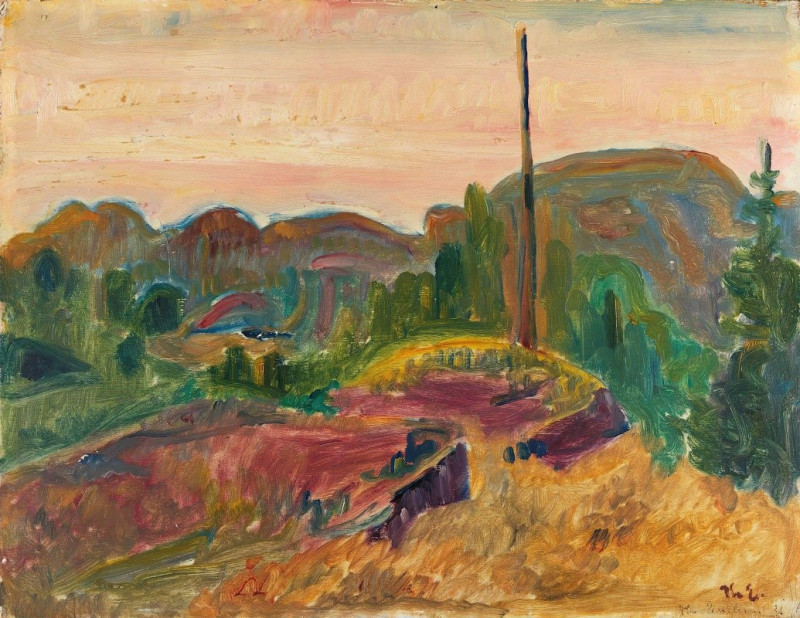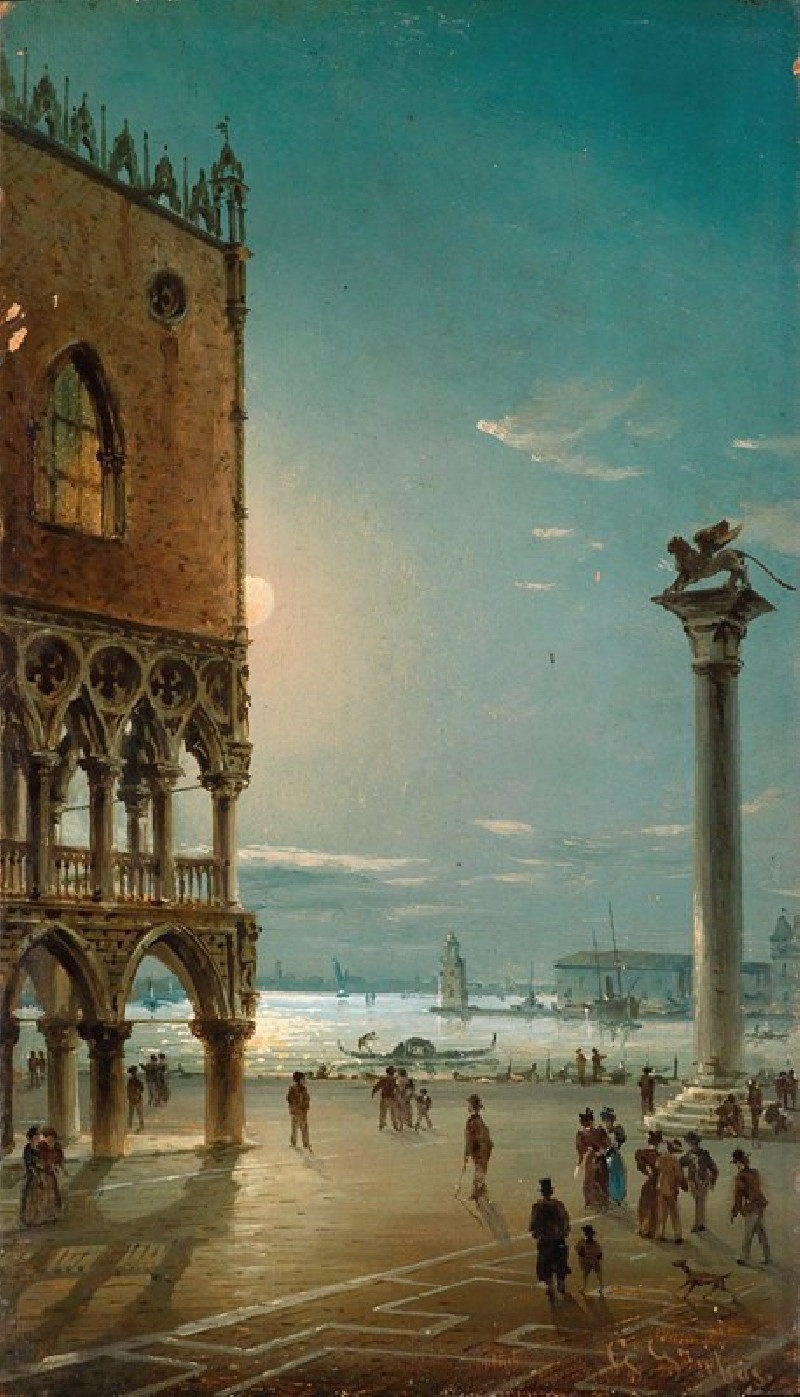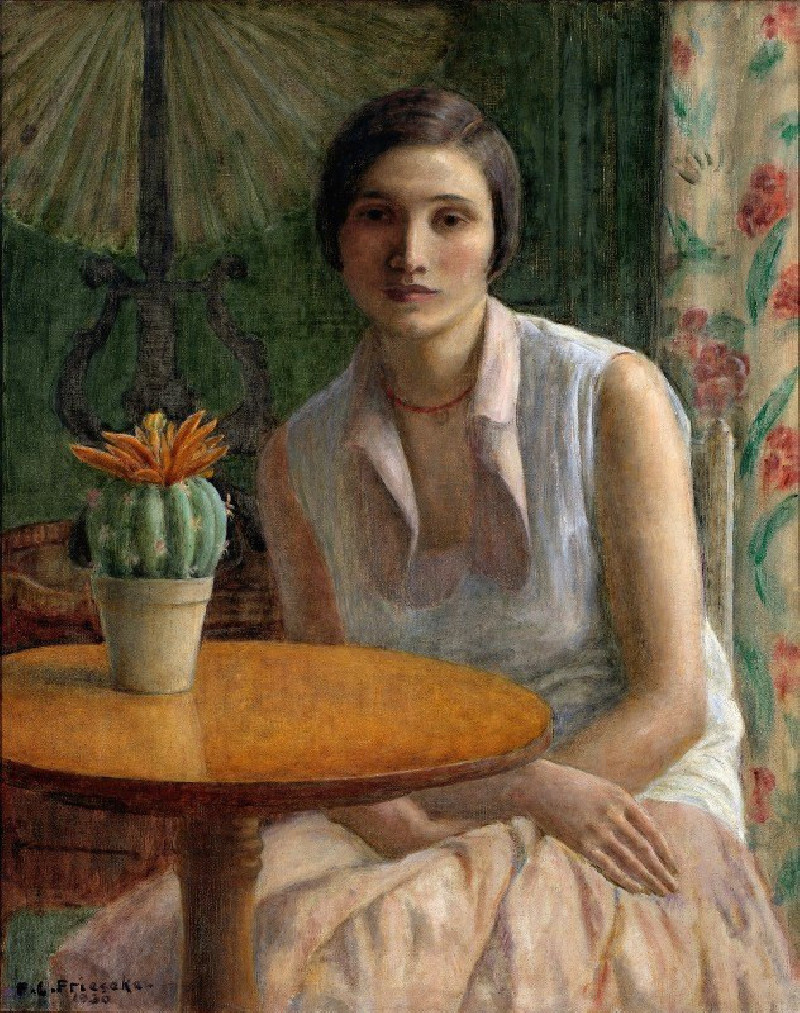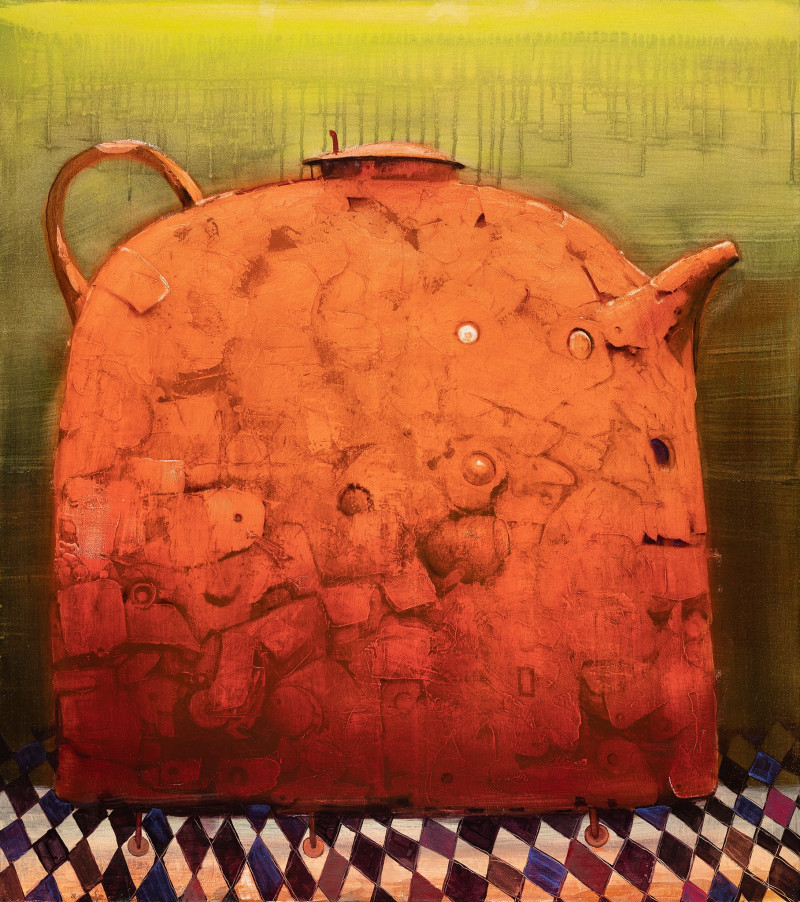Road branch (1913)
Technique: Giclée quality print
Recommended by our customers
More about this artwork
"Road Branch" (1913), by the iconic modern artist Paul Klee, presents a thoughtful exploration of the synthesis of nature and abstraction through its vibrant yet delicate composition. This artwork uses a subtle and somewhat muted palette that suggests the ephemeral beauty of a landscape in transition. The painting combines watercolor and ink on paper, featuring loose, sketch-like lines to describe a central path that branches off into different directions, inviting the viewer on a journey through its intricate spatial dynamics.The abstract representation of trees and foliage, rendered through chaotic scribbles and lines, evokes the wild, untamable aspects of nature. Simultaneously, the application of soft, translucent color washes captures the fleeting light and atmospheric conditions, perhaps at the cusp of a new day or season. Klee's mastery in layering these elements creates a dynamic interplay of depth and texture, making "Road Branch" more than just a visual representation but a sensory experience.Emerging during Klee's formative years, this painting exemplifies his lifelong fascination with nature and his unique ability to abstract natural forms and dimensions into emotive compositions. "Road Branch" encourages introspection and a contemplative look at the simplicity and complexity of the paths we tread in the natural world.
Delivery
Returns
Paul Klee was a Swiss-born German artist. His highly individual style was influenced by movements in art that included expressionism, cubism, and surrealism. Klee was a natural draftsman who experimented with and eventually deeply explored color theory, writing about it extensively; his lectures Writings on Form and Design Theory (Schriften zur Form und Gestaltungslehre), published in English as the Paul Klee Notebooks, are held to be as important for modern art as Leonardo da Vinci's A Treatise on Painting for the Renaissance.

